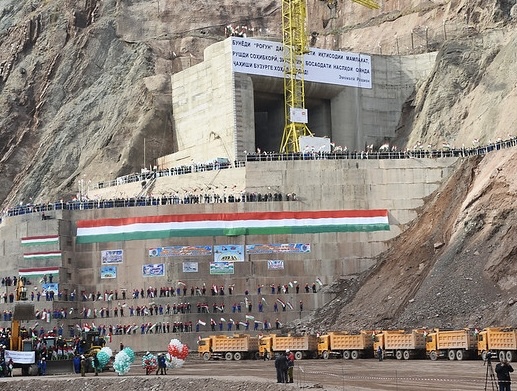Key Points
- The Rogun dam could become a hub for crypto-mining.
- Costs for the project have soared to $6.4 billion.
- Competing energy projects in Central Asia challenge Rogun’s future.
Despite considerable financial and environmental concerns, the World Bank has granted an initial $350 million grant for Tajikistan’s Rogun hydropower project, establishing the dam as a potential economic game-changer. Next came a $270 million loan from the Asian Infrastructure Development Bank and a $100 million line of credit from the Kuwait Fund for Arab Economic Development.
World Bank funds Rogun dam as crypto-mining speculation grows
As the tallest dam in the world, the Rogun dam is anticipated to produce 3,600 megawatts of energy each year. Although the dam is formally referred to as a catalyst for Tajikistan’s economic growth, its enormous power output also makes it a possible location for cryptocurrency mining, which some analysts say has aided in obtaining foreign funding.
Concerns have been expressed by environmentalists regarding the dam’s covert support of Bitcoin mining, a practice known for its detrimental effects on the environment.
“A mining farm does not create jobs for local residents,” said Alexander Kolotov, leader of the environmental organization Rivers Without Boundaries, who called Rogun’s ability to generate electricity “fantastic” for mining but questioned its benefits for local communities.
Hydropower, which provides 16% of Bitcoin’s electrical needs, has substantial environmental implications, including water and land footprints, according to a 2023 UN assessment on cryptocurrency mining.
Mounting construction costs and competition threaten Rogun’s economic viability
Among the many economic difficulties facing the Rogun project is the soaring cost of construction, which is currently expected to be $6.4 billion. Decreased export choices and improvements in solar and wind energy, according to critics, might make the dam unprofitable before it is completely operational.
While a cooperative partnership between Azerbaijan, Kazakhstan, and Uzbekistan seeks to deliver solar and wind power to Europe, export markets like Kazakhstan and Uzbekistan are investigating nuclear and renewable energy projects.
According to Oilprice, Rogun faces competition from other regional projects, including as Kyrgyzstan’s Kambarata-1 hydroelectric plant, which is anticipated to produce 2,000 megawatts per year. Critics caution that Tajikistan may find it difficult to find long-term customers for its electricity given Rogun’s ten-year timeframe to full capacity.
Rogun’s supporters contend that it has the potential to revolutionize Tajikistan’s economy, but watchdog organizations are not convinced. As one of the most corrupt countries in the world, Tajikistan has difficulties guaranteeing openness and fair benefit sharing.
Crypto mining is viewed by some as a backup strategy to guarantee investor profits. “The [crypto] mining link won’t be discussed until the budget balloons to an unmanageable level,” stated Chinara Aitbaeva, director of the Kyrgyz watchdog organization Nash Vek.



